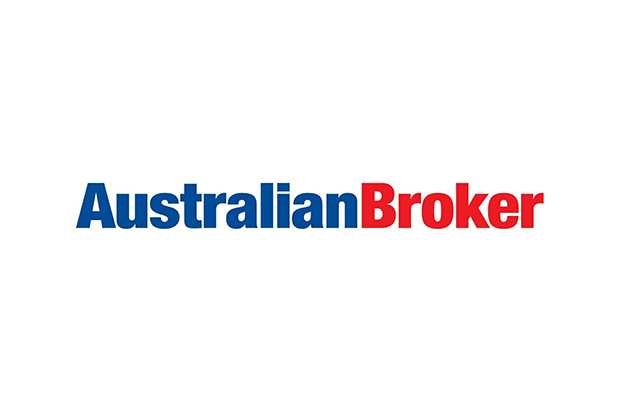The problem with boxes

Publication Date: Monday, 22 September 2025
This article originally appeared in Australian Broker.
Non-bank lenders are reshaping Australian finance with speed, flexibility and alternative solutions for complex borrowers
THE AUSTRALIAN LENDING MARKET has a problem with boxes. Traditional banks have spent decades perfecting the art of categorising borrowers into neat, predictable segments. But the modern economy doesn’t fit neatly into boxes any more. Self-employed workers represent 15% of the workforce. Business owners juggle multiple income streams. Property investors seek creative structures that mainstream lenders simply won’t touch.
This is where non-bank lenders are carving out their territory. While the major banks retreat from complexity, alternative lenders are stepping forward with solutions designed for the messier realities of contemporary finance.
Market share and growth trajectory
The numbers tell a compelling story. Non-banks’ share of housing credit sits around 4% as of January 2025, while their share of business credit reaches approximately 11%. More telling is the trajectory in SME lending intentions: 55% of small businesses now consider non-bank borrowing for growth funding, up from just 11% in 2014.
Traditional banks face institutional constraints that non-banks simply don’t encounter. Whether it’s self-employed borrowers lacking two years of tax returns or clients with bonus-heavy compensation structures, non-banks approach these scenarios with practical flexibility.
This growth reflects changing business needs and non-bank capabilities. As non-bank institutions have grown, some of the largest now operate at a scale similar to that of small banks in Australia.
The human touch in digital finance
While automation drives efficiency, non-bank lenders are discovering that technology works best when it enhances rather than replaces human judgement.
This hybrid approach allows non-banks to handle complexity that would stump automated systems. Jason Azzopardi, chief executive at Brighten, emphasises the value of experienced assessment: “Our experienced Sydney-based credit team takes a manual approach to assessment. This allows us to consider each application on its merits and better serve borrowers with diverse situations.”
The most successful non-bank lenders are building technology platforms designed specifically for broker workflows, rather than adapting consumer-focused systems. “We’ve integrated NextGen’s ApplyOnline into our technology suite, giving brokers a more intuitive loan submission process and reducing application times by an average of 30 minutes,” says Azzopardi. z
Addressing the documentation dilemma
The rise of alternative employment arrangements has created a documentation mismatch between how people earn money and how banks verify income. Non-banks are responding with flexible documentation requirements that reflect modern work patterns.
The alt-doc market represents a significant opportunity. “At Brighten, for example, our competitive alt-doc offering gives brokers more ways to support clients who fall outside standard bank criteria,” says Azzopardi. The company has extended these options across construction, vacant land and bridging loans, requiring just one form of income documentation.
Risk assessment beyond the algorithm
While banks increasingly rely on automated credit scoring and debt-to-income ratios, non-banks are taking a more contextual approach to risk assessment. The flexibility extends to borrowers recovering from financial setbacks. Rather than automatic exclusions based on credit events, non-banks often consider the circumstances and recovery trajectory. This nuanced approach opens opportunities for brokers dealing with clients who have overcome temporary financial difficulties.
Non-banks are differentiating themselves through broker support models that prioritise accessibility over volume requirements.
Specialised lending markets
Non-banks are finding particular success in market segments that traditional banks have abandoned or approach cautiously. Self-managed super funds represent one such opportunity. “The SMSF market continues to grow, with many consumers wanting to take charge of their retirement savings by buying property rather than remaining invested in ASX 50 indices with industry super funds,” Azzopardi observes.
Brighten is launching an SMSF product later this year, recognising that the complexity traditionally associated with this market creates opportunities for lenders willing to provide education and support. “SMSF lending has a reputation as difficult to understand, which is exactly why Brighten’s ‘easy-to-deal-with’ approach will have extra value for brokers,” says Azzopardi.
Non-banks are expanding into the commercial space, filling gaps left by major banks that have tightened their appetite for business lending. The growth in specialist lending creates financial inclusion for borrowers who fall outside traditional lending criteria. Whether it’s self-employed clients, borrowers with complex income structures or those with imperfect credit histories, specialist loans provide essential access to finance.
Overcoming perception challenges
Despite growing market share, non-bank lenders continue facing perception challenges among both brokers and borrowers. The regulatory environment provides additional support. “Consumers have the same protections as they would sourcing a loan from a bank,” Azzopardi says. “The standards under which we all operate are set out in the National Consumer Credit Protection Act, and they’re overseen by ASIC.”
Capital and funding sophistication
Modern non-banks operate with sophisticated funding arrangements. “At Brighten we believe our strong capital base and funding arrangements are a point of difference,” says Azzopardi. “We have well-established warehouse funding arrangements with multiple top-tier banks, three public RMBS programs and multiple wholesale credit funds to provide further funding diversification.”
This funding diversity allows non-banks to maintain competitive pricing while offering flexibility that traditional banks cannot match due to their institutional constraints.
“SMSF lending has a reputation as difficult to understand, which is exactly why Brighten’s ‘easy-to-deal-with’ approach will have extra value for brokers” – Jason Azzopardi, Brighten
As traditional banks continue retreating from complex lending scenarios, non-banks are positioning themselves not as alternative lenders but as primary solutions for modern finance needs. The question isn’t whether non-banks will continue growing – it’s how quickly brokers and borrowers will recognise that sometimes the best box is no box at all.
